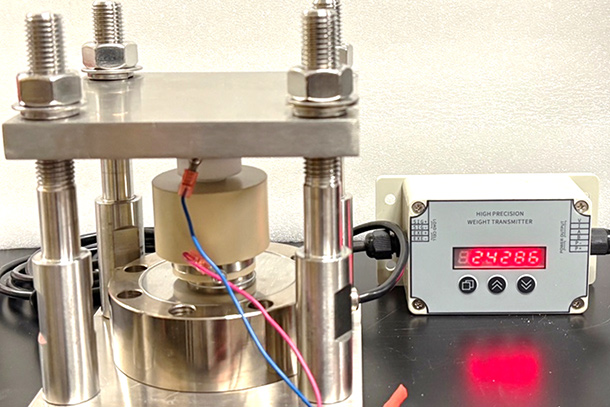ASME's 2010 Innovation Showcase Celebrates Student Invention and Entrepreneurial Spirit
ASME's 2010 Innovation Showcase Celebrates Student Invention and Entrepreneurial Spirit
4th Annual ASME IShow to be held June 5 in Pittsburgh, PA
NEW YORK, April 20, 2010 – The American Society of Mechanical Engineers (ASME) has announced that ten collegiate teams will be competing in the 4th Annual Innovation Showcase (IShow) on June 5. The ASME IShow provides the full experience of product development and commercialization to undergraduate and graduate students, bridging the gap between engineering knowledge and practical business skills. The competition will be held in conjunction with the ASME Annual Meeting, June 4-9, at the Omni William Penn Hotel in Pittsburgh, Pa.
Inspiring students to be product innovators and entrepreneurs, the ASME Innovation Showcase gives top collegiate teams an opportunity to compete for access to over $20,000 in prize funds to further develop their product. Using their technical knowledge and creativity, winners must prove to a judging panel of successful innovators, industry experts, venture capitalists, and intellectual property specialists that they have a sustainable business model and a product that will have a major impact on their chosen area.
With innovative ideas including a lever-propelled wheelchair to a portable drill bit sharpener, each ASME IShow team strives to utilize its new product concepts to impact the lives of people around the world through accessible and marketable inventions. Prior to the competition, ASME IShow teams are matched with mentors from their local entrepreneurial community – angel fund investors, universities, and technology-based economic development services – to help them refine their product, develop a business model, and create a product “pitch”.
“The ASME IShow offers participating teams a unique platform to hone both their engineering and business skills by applying them to today’s real-world challenges,” said Amos E. Holt, Ph.D., president of ASME. “This competition gives these hardworking and dedicated student teams the inspiration and resources needed to turn their ideas into tangible products that could someday change the world.”
Over 30 team submissions were received this year outlining the nature of their invention/technological breakthrough and its impact and market potential. Ten finalists were then chosen by the judges to participate in the ASME IShow competition. The finalists include:
•Arizona State University (Wiseman Sustainable Engine - WSE) The Wiseman Sustainable Engine or WSE is an internal combustion engine that transfers the linear motion of the piston to the rotating output shaft in a new and innovative way, providing a number of advantages over a traditional slider crank engine, including elimination of sidewall force, more torque at the output shaft, and more time for combustion resulting in increased energy transfer.
•Columbia University (Procar) A trocar is used to create ports into the abdomen during minimally invasive surgery. Procar is an advanced and competitively priced trocar with two distinct features: a quantitative force feedback system that will provide tissue layer differentiation and instantaneous notification of intraperitoneal access.
•MIT (Exo-Knee Prosthesis) A stance-lock, free swing, exoskeletal, cheap, transfemoral prosthesis. This device features a new technology that locks the knee when pressure from the ground is applied, in order to provide the user with a confident, efficient gate.
•MIT (Leveraged Freedom Chair) The Leveraged Freedom Chair is a lever-propelled wheelchair designed specifically to meet the mobility challenges facing the over 20 million people in developing countries with disabilities requiring a wheeled mobility device.
•Santa Clara University (Night Rider) Night Rider is an adaptive motorcycle headlight system that dramatically improves rider safety by optimizing headlight position and maximizing roadway illumination.
•Stanford University (6dot Braille Labeler) The 6dot Braille Labeler meets the needs of the blind community for a portable, easy-to-use Braille labeler for typical home or office use where identifying unlabeled products can be a tremendous and dangerous challenge.
•University of Detroit, Mercy (SEALE) The SEALE – Stability Enhanced Assistive Lift for the Elderly – is designed to meet the needs of elderly or handicapped people. This new technology is an active control system designed to work in unison with the human client.
•University of Michigan (SureSecure Anchor) The SureSecure Anchor provides a simple, fast and effective alternative to suturing the sleeve to the lead of a pacemaker or ICD.
•University of Michigan (Video Capsule Endoscopy - VCE) A VCE (video capsule endoscopy) -- or "pill camera" -- is routinely used for internal examinations. This advancement increases the efficiency, accuracy and cost of VCE use by incorporating new location tracking and blood detection technology.
•Western New England College (Bit Master) The Bit Master is a portable drill bit sharpener that provides a cost-effective means of increasing bit life.
About ASME ASME helps the global engineering community develop solutions to real world challenges. Founded in 1880 as the American Society of Mechanical Engineers, ASME is a not-for-profit professional organization that enables collaboration, knowledge sharing and skill development across all engineering disciplines, while promoting the vital role of the engineer in society. ASME codes and standards, publications, conferences, continuing education and professional development programs provide a foundation for advancing technical knowledge and a safer world.
- # -
ASME Contact: John Varrasi, ASME varrasij@asme.org or 212.591.8158



